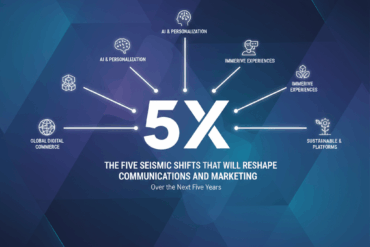What happens when you add a transactional layer to experiential marketing? Adriano Lombardi of Momentum Worldwide explores some of the best examples of experiential commerce – a new frontier for marketing.
As businesses evolve and consumers’ needs and behaviours shift due to new technologies, certain disciplines have started to merge. A prime example is retail media, a space in which adtech and commerce increasingly unite to boost retailer revenue, paving the way to a post-cookie future.
Leading brands like Coca-Cola are leveraging technologies like augmented reality, AI-driven personalization, and interactive digital displays to create consumer journeys that merge the convenience of e-commerce with the tactile satisfaction of the physical-store experience. This approach not only enhances customer engagement, it also empowers businesses to collect valuable data on consumer behaviour across platforms.
While retail media has reshaped how brands advertise at the point of sale, experiential commerce now presents a complementary transformation.
As the name suggests, the idea comes from experiential marketing, which focuses on bringing consumers closer to brands. Whether for a minute or an hour, the goal is to create meaningful experiences to allow people to truly live the brand and connect with its purpose. On the other hand, commerce has always been about driving transactions.
By combining the two, you get experiential commerce: a dynamic medium that bridges the gap between living the brand and trying or buying its products. The perfect mix of brand experience and consumer action that unlocks new opportunities to build deeper consumer relationships and drive measurable results.
Point of sale
We often talk about frictionless experiences, both digitally and in-store. Enter French postal service La Poste and the bright yellow changing rooms (designed to look like their post boxes) that they installed in post offices. While not intended primarily to drive sales, by seamlessly combining convenience with transaction-driven engagement, this move exemplifies experiential commerce.
La Poste has removed a key friction point in online shopping – saving customers the hassle of trying and returning items at home. This consumer-centric solution transforms postal offices into spaces that enhance the shopping experience, making returns effortless and driving sales by prioritizing convenience and efficiency. A small footprint created a big impact – and presumably helped to drive sales.
An idea from the Philippines, This is an Ikea Store, involved placing showrooms with their furniture in public spaces like coffee shops, gyms, and even on beaches. These activations allowed people to experience their own “Ikea moment” in everyday settings. Price tags with QR codes attached to products enabled on-the-spot online purchases. The campaign effectively brought the in-store experience to familiar places and turned everyday moments into potential points of sale.
What might initially seem like a media or product placement idea from Peru, the ‘Rent Your Sunset’ campaign by Corona is, in fact, a brilliant example of experiential commerce. Businesses, hotels, and Airbnb owners can submit photographs of the sunset views from their windows. If chosen, Corona brands the window with a painted frame and supplies the owner with a number of free beers.
This initiative combines a memorable branded experience – transforming sunset views into vibrant brand hotspots – with a clear transactional layer through sampling opportunities. This exchange captures the essence of experiential commerce: integrating a path to trial or purchase with an immersive, shareable consumer moment.
And for the pet lovers? Designed for those who can’t leave home without their best friends, the Purina Club is a permanent dog-friendly section in soccer stadiums – where pets are normally banned. Bringing dogs to the game unlocks rewards and sampling opportunities – driving engagement and, ultimately, sales. That’s how to turn an experience into a transactional opportunity.
Bridging the gap
These examples each embody the emerging practice of experiential commerce. Each execution combines the tactile satisfaction of a physical store with the convenience of e-commerce. By combining the two, the brands involved successfully bridge the gap between experience and conversion. This not only enhances the user experience but allows companies to learn more about their target audience. Brands can then forge more meaningful relationships with their customers – driving measurable results.
Experiential commerce will change how we shop. Alongside retail media, it looks set to usher in a new era of customer-centric commerce. Get your brand ready.

